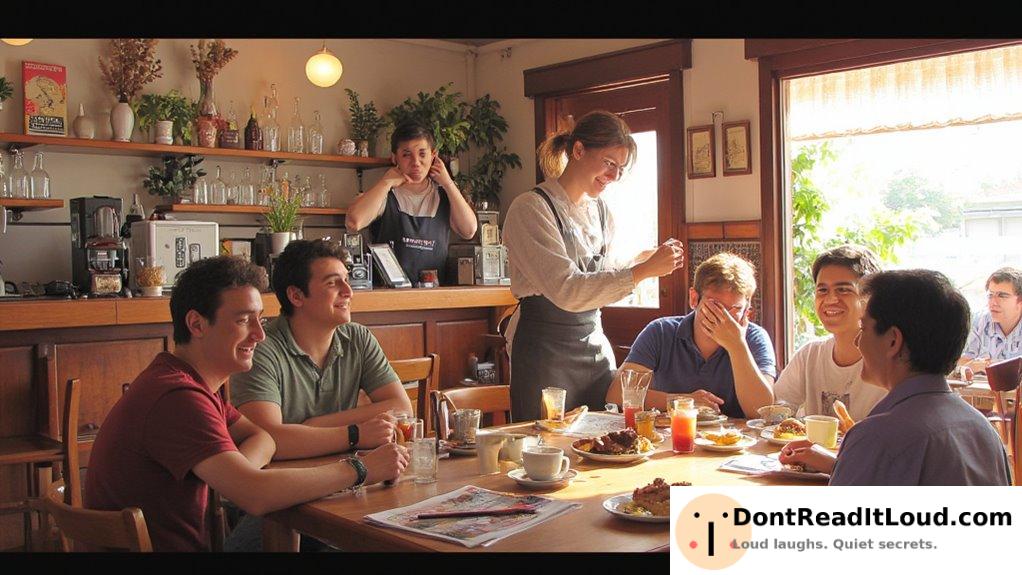
In Japan, dancing in certain venues requires a permit, a rule that dates back to post-WWII efforts to regulate entertainment and uphold public morality. Originally, these laws targeted dance halls and activities seen as disruptive or connected to illicit behavior. While enforcement and public attitudes remain mixed, recent legal changes have introduced greater flexibility. Explore how these rules reflect Japan’s cultural values and offer insights for other countries seeking to balance tradition with modern life.
The Origin of This Law

The law requiring permits to dance in Japan originated during the post-World War II era when the country was under American occupation. This period was marked by significant social and political restructuring as Japan transitioned from an imperial state to a democratic nation.
The occupation authorities and the Japanese government aimed to implement laws that would ensure public order and reflect emerging democratic values.
The specific law in question was part of the Fueiho, or the Act on Control and Improvement of Amusement Businesses, enacted in 1948. Fueiho was intended to regulate businesses and activities thought likely to undermine public morality, targeting dance halls, nightclubs, and similar entertainment venues.
Authorities were concerned that such establishments could foster illegal activities, including prostitution, gambling, and drug use, all of which were widespread in post-war Japan.
Dance halls faced particular scrutiny because they were linked to Western influences and seen as places where young people might behave inappropriately. The law required these venues to obtain special permits, and dancing after midnight was banned unless the venue held the proper license.
This approach was meant to address fears about threats to social order and public safety.
Strict enforcement of the law led to frequent police raids on dance venues, turning it into a symbol of conflict between cultural expression and government regulation.
Critics maintained that the law was obsolete and hampered Japan’s modern cultural and artistic life.
Mounting public pressure and shifting social values eventually prompted the Japanese government to revise the Fueiho law in 2015.
The amendments eased restrictions, permitting dancing in venues without a permit if they met conditions like adequate lighting.
This reform signaled a move toward a more open and culturally dynamic society, in line with contemporary Japanese values.
Why This Law Exists

The law requiring permits to dance in certain countries stems from a mix of historical, cultural, and political factors that still shape its enforcement.
A key reason for this regulation is the government’s aim to maintain public order and safety. Large dance events, especially in public spaces, can attract crowds and sometimes lead to safety concerns. Permits help authorities ensure organizers follow safety guidelines, control crowds, and provide essentials like security and medical assistance.
Culturally, regulating dance serves to uphold social norms and values. In some places, dance is deeply connected to tradition or religion, and unregulated events might challenge these customs. By controlling dance venues and timings, governments seek to shape cultural expression in line with accepted standards.
Politically, requiring permits gives authorities a way to monitor public gatherings. In areas with concerns about unrest, oversight of dance events helps prevent them from becoming sites for protest or opposition. This system allows officials to keep track of assemblies that could foster political or social movements.
How This Law Reflects it’s Culture?

The requirement for dance permits in some countries reflects underlying cultural values that emphasize order, tradition, and public morality. Often, these laws stem from historical periods when dance was seen as a powerful and potentially disruptive form of expression.
For instance, Japan’s “fueiho” law, which required permits for dancing until it was eased recently, originated after World War II. It aimed to control dance halls, which were associated with gambling and prostitution, demonstrating a strong focus on public decency and moral standards.
In places with such laws, dance is considered more than entertainment—it’s viewed as something that can shape social behavior and community life. The permit system ensures that dance events respect community values and uphold public order.
These laws also reveal a country’s approach to cultural regulation, with the government actively shaping national identity and unity. By overseeing where and when people can dance, authorities help preserve cultural traditions and minimize influences that might disrupt social harmony.
What Happens If You Break This Law?

In the country where dance permits are required, breaking this law can result in a range of legal and social consequences. If someone is caught dancing without the proper permit, they may receive a fine, which varies by region and the seriousness of the offense. These fines are usually monetary, aiming to discourage people from skipping the permit process.
Offenders could also face more severe penalties, such as being summoned to court. Repeat violations or organizing unauthorized dance events might lead to charges that result in community service or even brief jail time. The legal process can be demanding and expensive, as individuals may need to hire legal representation.
Public opinion on enforcing this law is often divided. Some community members back strong enforcement, believing it helps keep public gatherings safe and orderly. Others view the law as too restrictive and a violation of personal freedoms, which can spark protests or public criticism.
This disagreement often leads to debates about how much regulation is appropriate for personal expression.
Could Other Countries Learn from This Law?

In examining the law requiring permits to dance in a specific country, we find a fascinating case study on how different nations approach the regulation of public activities. This law mandates that venues or individuals obtain a permit before engaging in or hosting dancing events. The rationale often cited for such regulations includes maintaining public order, ensuring safety, and managing noise levels.
However, this approach isn’t universally applied, and comparing it with how other countries handle similar situations can offer insights into its effectiveness and adaptability.
Comparison with Other Countries:
1. United States:
In the United States, regulation of dancing and entertainment venues varies by state and city. Some cities, like New York, historically had the “Cabaret Law,” which required venues to have a specific license for hosting dancing. This law was criticized for being outdated and was repealed in 2017.
Generally, the U.S. tends to favor less restrictive regulations, prioritizing business freedom and cultural expression unless public safety is at risk.
2. United Kingdom:
The UK requires venues to obtain a license for live music and dancing under the Licensing Act 2003. This law aims to balance the interests of businesses, patrons, and local residents.
The focus is on ensuring that events don’t cause public nuisance, addressing noise pollution, and maintaining public safety.
3. Japan:
Japan’s “fueiho” law, enacted in 1948, restricted late-night dancing to prevent disorderly conduct. This law was relaxed in 2015, reflecting changing cultural norms and the government’s desire to promote nightlife and tourism.
The revised law allows dancing in licensed venues without time restrictions, provided certain conditions are met.
4. Sweden:
Sweden requires venues to have a dance permit, a regulation stemming from concerns about public disorder and safety. However, this has been criticized as overly restrictive and a hindrance to cultural activities.
Discussions about reforming this law are ongoing, with some advocating for its abolition to encourage more vibrant nightlife.
Can Other Countries Learn from This Law?
- Benefits:
- Public Safety and Order: Countries with similar laws may appreciate the focus on maintaining order and ensuring public safety. This is particularly relevant in densely populated urban areas.
- Noise Control: Regulating dancing through permits can help manage noise levels and minimize disturbances to residents, a concern shared by many urban centers worldwide.
- Challenges:
- Cultural Expression: Stringent regulations can stifle cultural and artistic expression, leading to criticism from artists and the public.
- Economic Impact: Permitting processes can be cumbersome and may deter small businesses or informal venues, impacting local economies and nightlife.
Conclusion:
The necessity of permits for dancing highlights a unique approach to nightlife regulation. While there are benefits in terms of public safety and noise management, the law can also be seen as restrictive.
Other countries can learn from this approach by considering how to balance regulation with cultural and economic vitality.
Adapting such laws requires careful consideration of local contexts, public opinion, and the potential impact on cultural activities.
The key takeaway is that while regulation is important, it shouldn’t unnecessarily hinder cultural and social vibrancy.
Conclusion: What Makes this Law So Unique
In this country, requiring permits for dancing is a law that distinguishes it internationally. This regulation isn’t only uncommon but also carries deep cultural meaning, illustrating how governance, tradition, and social practices intersect here. The law is enforced strictly, often requiring complex paperwork and close oversight, which reveals the nation’s cautious approach to public activities.
What sets this law apart is its cultural foundation. Mandating dance permits reflects how integral dance is to the nation’s social traditions and historical identity. It emphasizes the intention to safeguard cultural heritage and ensure dance stays in harmony with national values.
This approach can evoke both pride and debate, as it places creative expression within an official structure, aiming to balance individual freedom with preservation. Other countries might take inspiration from this law by exploring ways to use regulation to protect and celebrate cultural practices without stifling personal expression.
It offers a possible example of how laws can both limit and honor tradition, encouraging dialogue between past customs and contemporary life. Still, adopting such a law elsewhere would require careful attention to local beliefs, freedoms, and cultural identities.



